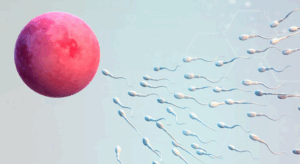
Prolistem® at the ESHRE 41th – Paris
We are proud to have participated in the 41st Annual ESHRE Conference in Paris, a premier international event where the global reproductive medicine community gathers

What percentage of people have azoospermia? When it comes to male fertility, one of the most unsettling terms a man can hear is azoospermia. This condition, which refers to the complete absence of sperm in a man’s ejaculate, can make it much harder to conceive. If you and your partner are struggling to start a family, this might be one of the challenges you’re facing. But don’t worry—let’s break down exactly what azoospermia is, how common it is, its causes, and what treatment options are available.
Azoospermia is a medical condition where a man’s semen contains no sperm. Unlike low sperm count, which may still have some sperm present, azoospermia means that sperm is completely absent from the semen. Azoospermia is one of the leading causes of male infertility and is responsible for about 1% of all male infertility cases.
Azoospermia affects about 1% of all men and 10-15% of men who experience infertility. This means that out of every 100 men, at least one may be affected by azoospermia. Among couples trying to conceive, azoospermia is one of the most common male fertility issues. If you or your partner are dealing with this, remember, that you’re not alone.
Azoospermia can be categorized into two main types: obstructive azoospermia (OA) and non-obstructive azoospermia (NOA). Both types have different causes and require different treatment approaches.
In cases of obstructive azoospermia, the body is still producing sperm, but there is a blockage that prevents the sperm from being released into the semen. The blockage is typically located in the reproductive ducts. Common causes of obstructive azoospermia include:
In non-obstructive azoospermia, the body does not produce sperm at all or produces very little. The causes include:
If you’ve been struggling to conceive and nothing’s happening, your doctor may suggest a series of tests to diagnose azoospermia. These tests might include:
The good news is that many cases of azoospermia are treatable. The treatment depends on the underlying cause.
Getting diagnosed with azoospermia can be overwhelming, but it’s important to know that it doesn’t necessarily mean the end of your journey to fatherhood. Thanks to advances in fertility treatments, many men with azoospermia have successfully fathered children through options like sperm retrieval and IVF.
If natural conception isn’t possible, other options like sperm donation and adoption can also help build a family. It’s essential to talk to a fertility specialist to explore all your options and understand the next steps.
Azoospermia can feel like a significant roadblock, but it’s not the end of the road. The first step is understanding what the condition is, what causes it, and how common it is. From there, you can explore various treatment options, including surgery, hormone therapy, or assisted reproductive technologies like IVF. If you or someone you know is dealing with azoospermia, don’t hesitate to seek medical advice—there’s more help and support than ever before. What percentage of people have azoospermia?
Stay strong, stay informed, and never give up. There’s hope!

We are proud to have participated in the 41st Annual ESHRE Conference in Paris, a premier international event where the global reproductive medicine community gathers

Introduction: A New Era of Hope for Male Infertility The promising cure for azoospermia 2025 is redefining the future of male fertility. As medical science
Prolistem, a patented formula, has not been evaluated by the Food and Drug Administration. This product is not intended to diagnose, treat, cure, or prevent any disease.
PROLISTEM® is a Patented Formula
Copyright © 2025 Prolistem®